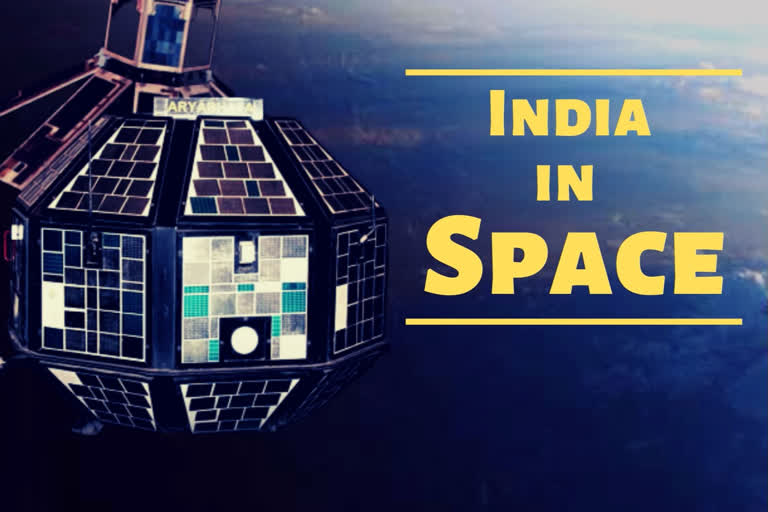Hyderabad:The Aryabhata spacecraft, named after the famous Indian astronomer, was India's first satellite; it was completely designed and fabricated in India and launched by a Soviet Kosmos-3M rocket from Kapustin Yar on April 19, 1975.
Aryabhata, first unmanned Earth satellite built by India. It was named for a prominent Indian astronomer and mathematician of the 5th century. The satellite was assembled at Peenya, near Bangalore, but was launched from within the Soviet Union by a Russian-made rocket on April 19, 1975.
Aryabhata weighed 794 pounds (360 kg) and was instrumented to explore conditions in Earth’s ionosphere, measure neutrons and gamma rays from the Sun, and perform investigations in X-ray astronomy. The scientific instruments had to be switched off during the fifth day in orbit because of a failure in the satellite’s electrical power system. Useful information, nevertheless, was collected during the five days of operation.
Aryabhata: Remembering India’s first satellite
It remains one of the proudest moments, not only for India’s space program, but as a landmark in the history of the country. Forty-five years ago, on 19 April 1975, the rocket thrusters fired to launch India’s first indigenous satellite. It was named Aryabhata, yet like many initial forays beyond the Earth’s atmosphere, the project stumbled and ran afoul of roadblocks, a reminder that is still relevant today about the precariousness of ambition.
The Indian satellite program began to take shape in the early 1970s, although local scientists had long dreamed of an indigenous Indian program since the time of Sputnik. After the eventual success of the Indian built Rohini rocket program in the 1960s, the Indian Space Research Organisation shifted focus to
building indigenous satellites. Vikram Sarabhai, the ISRO founder and a renowned physicist who also had a role in the development of India’s nuclear industry, appointed a team of 25 engineers and researchers at Physical Research Laboratory in Ahmedabad. Under the direction of space scientist Dr. U R Rao, a 100- kilogram satellite was designed, intended to be launched by the United States using the Scout launch vehicle – a multistage rocket seen as reliable and affordable for India.
Did you know India's first spacecraft Aryabhata was launched by Russia?
Aryabhata, the first satellite built by India, was launched on this day April 19, in the year 1975. Aryabhata was built by the Indian Space Research Organization (ISRO) to conduct experiments in X-ray astronomy, aeronomics, and solar physics. The spacecraft was a 26-sided polygon with a diameter of 1.4 metres.
On its 45th anniversary of Aryabhata's launch, here are facts about the first unmanned Indian Earth satellite-
1. The satellite was named Aryabhata by India's first woman Prime Minister, Indira Gandhi. It was named after the prominent Indian astronomer and mathematician of the 5th century bearing the same name.
2.The 360-kilogram satellite built by ISRO was launched by Russia from their Kapustin Yar rocket launch and development site using a Kosmos-3M launch vehicle. The agreement between India and the Soviet Union directed by U.R. Rao in 1972 allowed the USSR to use Indian ports for tracking ships and launching vessels as a token for launching Indian satellites.
3. The satellite had its data receiving centre in Bangalore, where a toilet was converted to serve the purpose.
4.A failure in the satellite's electrical power system halted experiments for four days. The spacecraft incurred a power fall which resulted in the ceasing of its functioning and transmission of information prior to its launch.
5. The project of the satellite was initially pegged at Rs 3 crore but cost a little more, as furniture and other things had to be bought.
6.The historic event was celebrated by the Reserve Bank of India and the satellite's image appeared on the reverse of Indian 2 rupee banknotes between 1976 and 1997.
7.To commemorate the event, both India and Russia released commemorative stamps and first day covers.
8.It had a real-time data transmission rate of 256 bits/sec with an internal temperature ranging from 0 to 40 degrees Celsius.
9. Aryabhata re-entered Earth's atmosphere after 17 years of its former launch on February 11, 1992.
